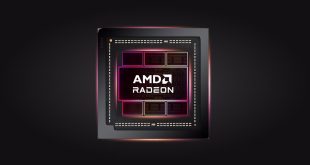Accessing the inside of the Node 304 is a little different to how you open a standard mid-tower case as the sides and top of the case are all formed from one panel. Once it's removed, you have full access to the insides.
When the case has been opened, the most obvious elements of the case are the hard drive caddies. There are three in total which can take up to six 2.5″ or 3.5″ drives. They can also be removed if required.
In the front of the case, there are two Fractal Design branded 92 mm intake fans which spin at 1,400 RPM. These suck in cool air from the top of the case and blow it through the hard drive caddies.
In the rear of the case there is a 140 mm fan vent which would be ideal to fit a 120 mm or 140 mm factory-filled water cooling unit like the Corsair H80i or NZXT Kraken X40.
There isn't a lot of space to work with in the Node 304 so installation can be a bit tricky. The components are packed so tightly together and can conflict with each other if not selected correctly. For example, if you have a modular power supply, it will need to be less than 160 mm in length so that it doesn't conflict with the graphics card.
First of all we installed the ASRock Z77E-ITX motherboard into the system, followed by the Arctic Freezer 7 Pro CPU cooler and Kingston HyperX Genesis RAM. Please note that most CPU coolers will need to be installed onto the motherboard before putting the motherboard into the system as there isn't a cut-out to install a backplate. The Freezer 7 Pro secures using push-pins, though, so this isn't necessary.
We decided to use our Corsair GS800 power supply in this system which is a non-modular unit. We initially tried to fit a Corsair HX850W but this conflicted with the graphics card, not leaving enough room for the cables to be plugged in.
Then we installed the AMD Radeon HD 7950 graphics card into the system. This required us to cram it in next to the myriad of cables protruding from the back of the power supply.
There was just enough room for this model but any longer graphics card would probably encounter issues.
Finally we attached our solid state drive to one of the hard drive caddies and set about organising the mess of cables.
Cable routing can be quite difficult in this case as it hasn't really been designed to accommodate all the surplus cables of a non-modular power supply, even though it's difficult to fit a modular unit in.
We decided to bunch them together within one of the hard drive caddies to hold them in place.
 KitGuru KitGuru.net – Tech News | Hardware News | Hardware Reviews | IOS | Mobile | Gaming | Graphics Cards
KitGuru KitGuru.net – Tech News | Hardware News | Hardware Reviews | IOS | Mobile | Gaming | Graphics Cards











Looks like quite a nice case, fair review.
I was hoping to get one since it was released last year, but they are near impossible to find.
I think it’s good to see more micro cases supporting your standard ATX PSU – I have yet to see a PC which has actually had more than 3 HDDs at a time.
I bought one of these and have a couple notes to make: I put in a GS600 and it has to be fitted upside-down, there is virtually no room for the cables, screws on the back are not the same as screws for the HDD trays, the big fan at the back makes more noise than my laptop, and it looks extremely awesome next to my subwoofer!
It is one headache to put together.